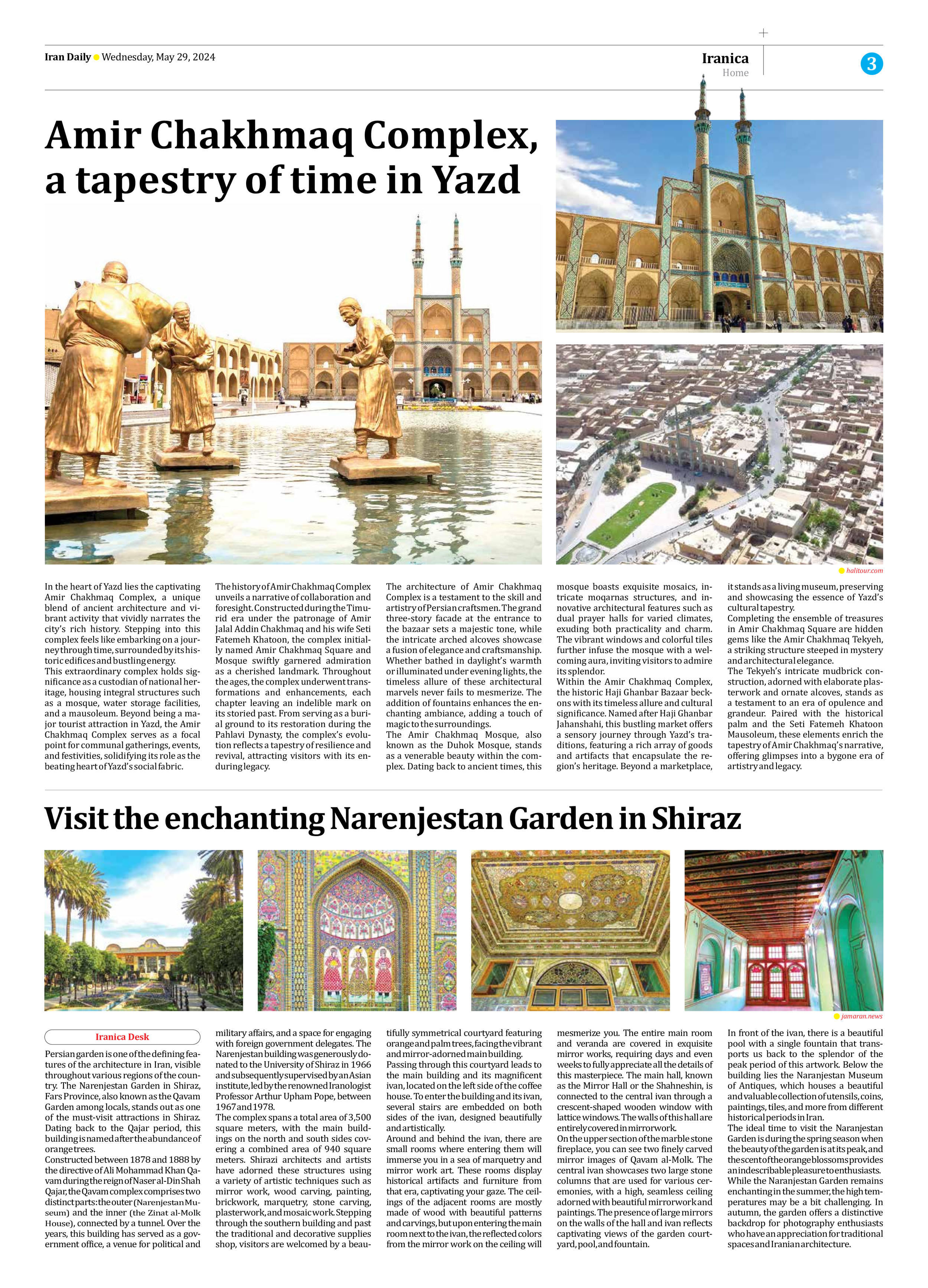
Visit the enchanting Narenjestan Garden in Shiraz
Persian garden is one of the defining features of the architecture in Iran, visible throughout various regions of the country. The Narenjestan Garden in Shiraz, Fars Province, also known as the Qavam Garden among locals, stands out as one of the must-visit attractions in Shiraz. Dating back to the Qajar period, this building is named after the abundance of orange trees.
Constructed between 1878 and 1888 by the directive of Ali Mohammad Khan Qavam during the reign of Naser al-Din Shah Qajar, the Qavam complex comprises two distinct parts: the outer (Narenjestan Museum) and the inner (the Zinat al-Molk House), connected by a tunnel. Over the years, this building has served as a government office, a venue for political and military affairs, and a space for engaging with foreign government delegates. The Narenjestan building was generously donated to the University of Shiraz in 1966 and subsequently supervised by an Asian institute, led by the renowned Iranologist Professor Arthur Upham Pope, between 1967 and 1978.
The complex spans a total area of 3,500 square meters, with the main buildings on the north and south sides covering a combined area of 940 square meters. Shirazi architects and artists have adorned these structures using a variety of artistic techniques such as mirror work, wood carving, painting, brickwork, marquetry, stone carving, plasterwork, and mosaic work. Stepping through the southern building and past the traditional and decorative supplies shop, visitors are welcomed by a beautifully symmetrical courtyard featuring orange and palm trees, facing the vibrant and mirror-adorned main building.
Passing through this courtyard leads to the main building and its magnificent ivan, located on the left side of the coffee house. To enter the building and its ivan, several stairs are embedded on both sides of the ivan, designed beautifully and artistically.
Around and behind the ivan, there are small rooms where entering them will immerse you in a sea of marquetry and mirror work art. These rooms display historical artifacts and furniture from that era, captivating your gaze. The ceilings of the adjacent rooms are mostly made of wood with beautiful patterns and carvings, but upon entering the main room next to the ivan, the reflected colors from the mirror work on the ceiling will mesmerize you. The entire main room and veranda are covered in exquisite mirror works, requiring days and even weeks to fully appreciate all the details of this masterpiece. The main hall, known as the Mirror Hall or the Shahneshin, is connected to the central ivan through a crescent-shaped wooden window with lattice windows. The walls of this hall are entirely covered in mirrorwork.
On the upper section of the marble stone fireplace, you can see two finely carved mirror images of Qavam al-Molk. The central ivan showcases two large stone columns that are used for various ceremonies, with a high, seamless ceiling adorned with beautiful mirrorwork and paintings. The presence of large mirrors on the walls of the hall and ivan reflects captivating views of the garden courtyard, pool, and fountain.
In front of the ivan, there is a beautiful pool with a single fountain that transports us back to the splendor of the peak period of this artwork. Below the building lies the Naranjestan Museum of Antiques, which houses a beautiful and valuable collection of utensils, coins, paintings, tiles, and more from different historical periods in Iran.
The ideal time to visit the Naranjestan Garden is during the spring season when the beauty of the garden is at its peak, and the scent of the orange blossoms provides an indescribable pleasure to enthusiasts.
While the Naranjestan Garden remains enchanting in the summer, the high temperatures may be a bit challenging. In autumn, the garden offers a distinctive backdrop for photography enthusiasts who have an appreciation for traditional spaces and Iranian architecture.







